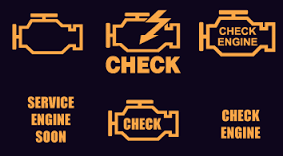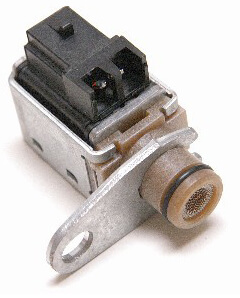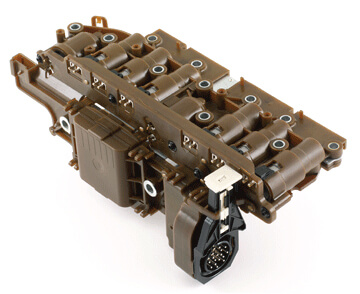Get car out of limp mode
How to get your car out of limp mode
Limp mode is a self-protection method to prevent further transmission damage. When a vehicle goes into limp mode it allows you to drive the vehicle, but limits you to a maximum of 30-45MPH and prevents upshifting to a higher gear. You’ll also see higher engine RPMs and dramatically reduced gas mileage because you’re staying in a lower gear.
What causes a transmission to enter limp mode?
The shift mechanisms on older transmissions operated with accumulators that would fill with fluid and push a plunger out or in to apply or release a band or fill a clutch pack to lock clutch discs together. Modern transmissions operate a differently. Based on inputs from the throttle position sensor and mass airflow sensor and the torque converter input shaft speed sensor, the powertrain control module or transmission control module determines when to perform shifting and how quickly to perform the shift.
The computer uses fluid pressure from the transmission pump and shift solenoids that pulse the pressurized fluid into servos and clutch packs. After it completes a shift, it expects to see a different rotation rate on the output sensor. If it doesn’t see the expected rotation after a certain number of shifts or a certain period of time, it concludes that there’s a problem with a sensor or an internal transmission problem. For example, if a clutch pack is worn or the lip seal in the clutch pack is leaking and can’t hold pressure, the clutch discs will slip. When that happens, the computer won’t see the expected rate of rotation on the output shaft sensor. To prevent further damage, the computer will enter limp mode and prevent the transmission from shifting to higher gears.
How do you know if you’re in limp mode?
First, you’ll see a check engine light or service engine soon, OR you’ll see a

Different types of “Check Engine” lights
warning message on the driver information display. You’ll also notice high engine RPM’s, decreased gas mileage and limited speed of only 30-45 MPH.
How to get out of limp mode?
Pull off the road. Turn off the engine. Restart the engine and shift into drive. The car may drive normally for a while. But if the computer sees the same condition that put it in limp mode initially, it will go back into limp mode again. Do not repeatedly turn off the engine and restart it to bypass limp mode. You’ll just be causing more damage to your transmission.
What to do once you’re car is in limp mode?
The root cause of the failure can be something simple like a bad sensor.

Individual Shift Solenoid
It can also be a faulty solenoid that’s not applying the correct fluid pressure to a clutch pack or servo. Some solenoids can be replaced individually, while others must be replaced as a “pack.”
But fixing a limp mode problem isn’t something that can fixed on the side of the road. Drive it to a repair shop. If you’re on a trip, call a tow truck and get it to a shop.

Solenoid pack
Get the trouble codes read
Scanning the computer for trouble codes is your first step in diagnosis. The trouble code will tell you if the problem is sensor or circuit related. Otherwise, drive home and call a service center to have your vehicle towed
Typical trouble codes that can cause limp mode
P0715 Input/Turbine Speed Sensor Circuit Malfunction
P0716 Input/Turbine Speed Sensor Circuit Range/Performance
P0717 Input/Turbine Speed Sensor Circuit No Signal
P0718 Input/Turbine Speed Sensor Circuit Intermittent
P0720 Output Speed Sensor Circuit Malfunction
P0721 Output Speed Sensor Range/Performance
P0722 Output Speed Sensor No Signal
P0723 Output Speed Sensor Intermittent
P0725 Engine Speed input Circuit Malfunction
P0726 Engine Speed Input Circuit Range/Performance
P0727 Engine Speed Input Circuit No Signal
P0728 Engine Speed Input Circuit Intermittent
P0730 Incorrect Gear Ratio
P0731 Gear I Incorrect ratio
P0732 Gear 2 Incorrect ratio
P0733 Gear 3 Incorrect ratio
P0734 Gear 4 Incorrect ratio
P0735 Gear 5 Incorrect ratio
P0736 Reverse incorrect gear ratio
P0745 Pressure Control Solenoid Malfunction
P0746 Pressure Control Solenoid Performance or Stuck Off
P0747 Pressure Control Solenoid Stuck On
P0748 Pressure Control Solenoid Electrical
P0749 Pressure Control Solenoid Intermittent
P0750 Shift Solenoid A Malfunction
P0751 Shift Solenoid A Performance or Stuck Off
P0752 Shift Solenoid A Stuck On
P0753 Shift Solenoid A Electrical
P0754 Shift Solenoid A Intermittent
P0755 Shift Solenoid B Malfunction
P0756 Shift Solenoid B Performance or Stock Off
P0757 Shift Solenoid B Stuck On
P0758 Shift Solenoid B Electrical
P0759 Shift Solenoid B Intermittent
P0760 Shift Solenoid C Malfunction
P076 I Shift Solenoid C Performance or Stuck Off
P0762 Shift Solenoid C Stuck On
P0763 Shift Solenoid C Electrical
P0764 Shift Solenoid C Intermittent
P0765 Shift Solenoid D Malfunction
P0766 Shift Solenoid D Performance or Stuck Off
P0767 Shift Solenoid D Stuck On
P0768 Shift Solenoid D Electrical
P0769 Shift Solenoid D Intermittent
P0770 Shift Solenoid E Malfunction
P0771 Shift Solenoid E Performance or Stuck Off
P0772 Shift Solenoid E Stuck On
P0773 Shift Solenoid E Electrical
P0774 Shift Solenoid E Intermittent
P0780 Shift Malfunction
P0781 1-2 Shift Malfunction
P0782 2-3 Shift Malfunction
P0783 3-4 Shift Malfunction
P0784 4-5 Shift Malfunction
©, 2018 Rick Muscoplat
Posted on by Rick Muscoplat
